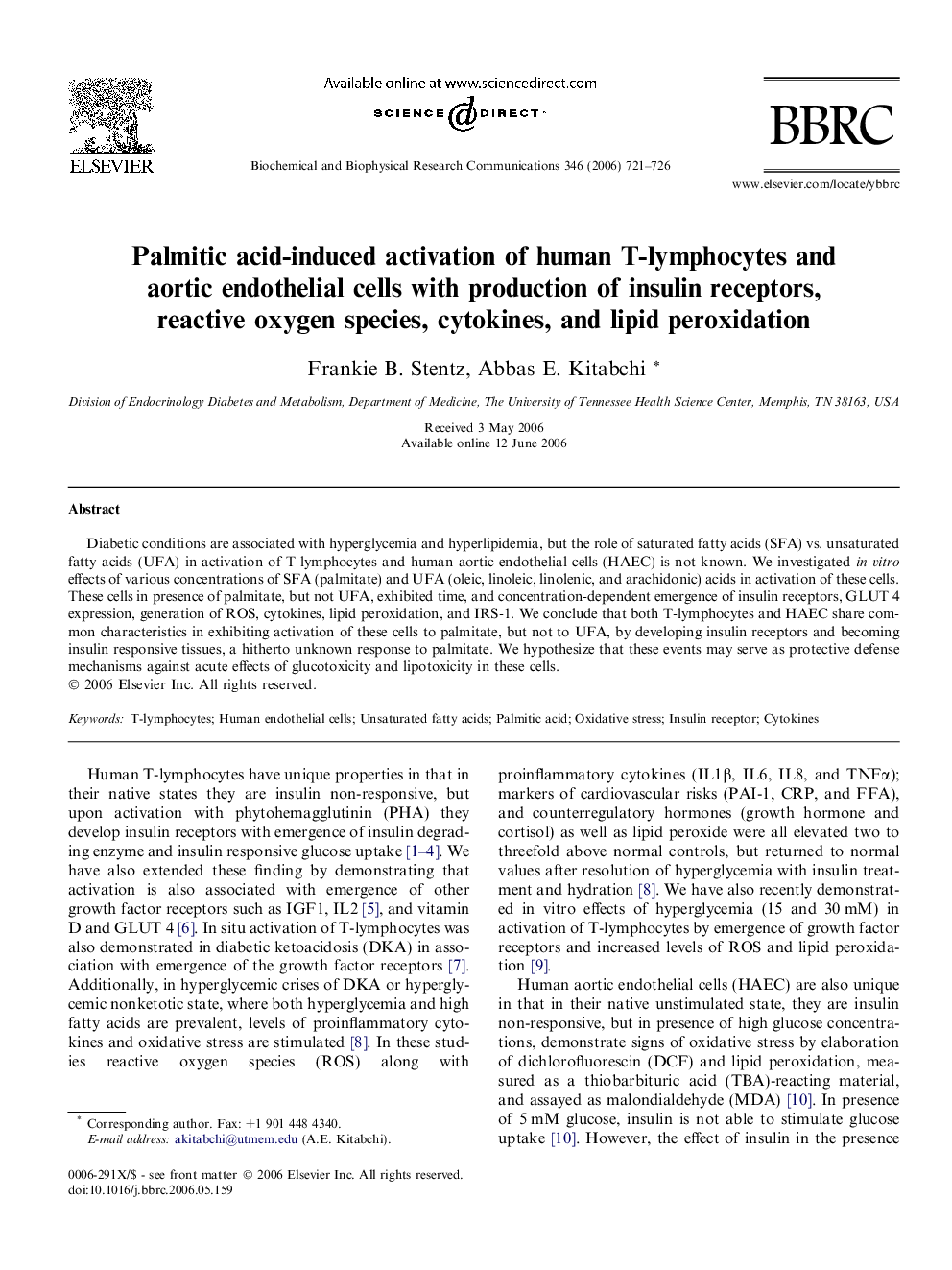| Article ID | Journal | Published Year | Pages | File Type |
|---|---|---|---|---|
| 1939449 | Biochemical and Biophysical Research Communications | 2006 | 6 Pages |
Diabetic conditions are associated with hyperglycemia and hyperlipidemia, but the role of saturated fatty acids (SFA) vs. unsaturated fatty acids (UFA) in activation of T-lymphocytes and human aortic endothelial cells (HAEC) is not known. We investigated in vitro effects of various concentrations of SFA (palmitate) and UFA (oleic, linoleic, linolenic, and arachidonic) acids in activation of these cells. These cells in presence of palmitate, but not UFA, exhibited time, and concentration-dependent emergence of insulin receptors, GLUT 4 expression, generation of ROS, cytokines, lipid peroxidation, and IRS-1. We conclude that both T-lymphocytes and HAEC share common characteristics in exhibiting activation of these cells to palmitate, but not to UFA, by developing insulin receptors and becoming insulin responsive tissues, a hitherto unknown response to palmitate. We hypothesize that these events may serve as protective defense mechanisms against acute effects of glucotoxicity and lipotoxicity in these cells.
